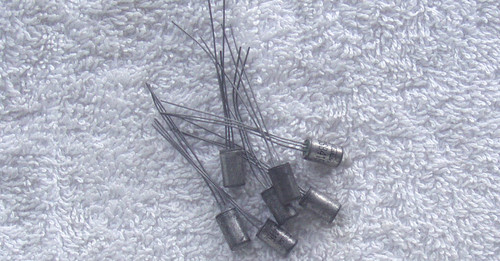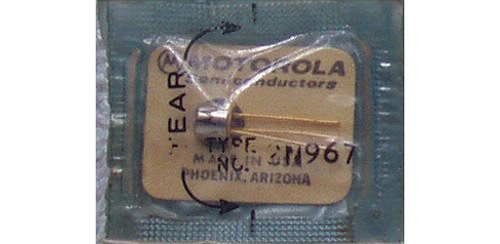HISTORY:
Sustainability is the name of the game! Anything (that has been tested and still functioning properly) should be repurposed creating saving in wasted Ee and reducing the poisoning our environment when items are buried in the earth at the local tip needlessly.
Never heard of Ee? It is a concept that creates a measurement of ALL things (not just electronics) that humans have made and the energy used in obtaining the raw material, processing the materials right through to a finished product and even should include the shipping of the item to the distributors/retailers.
If you would like to know more about Ee values, please take a look HERE
This electronic component is brand new, old (very old!) stock.
As this is brand new (but old stock) equipment spare part, I am offering 100% warranty with this product - any issues and a full refund is offered.
How long since you've seen some Germanium transistors? These were in common use way back when I was a teenager in the late 1960's and of course, I bought some (although very expensive at the time) from my pocket money. After all these years, I still have these (I am stunned!) - not much call for an old Ge transistor these days although I know these transistors are used in a Fulltone '69 Fuzz pedal, Wow!
If you have one of these, my transistors could be handy. These pedals are worth restoring, fetching VERY HIGH prices these days

TOSHIBA - Germanium Transistor
Made in Japan
Circa late 1960's ~ 1970's (50+ years old!)
Type: 2SB415
PNP
Package: TO-1
Purpose: audio applications, considered to be in the same family as the AC128 (these were commonly used in push pull outputs of little transistor radios back in the dark ages) and others. Ge transistors had a big problem though, thermal runaway - once they start 'cooking' they tend to self sacrifice.
Even after all these years, datasheets can be found if you hunt around hard enough.
NEW Very OLD stock
COSMETIC CONDITION:
Well, the side printing on these old Japanese transistors is often not great but on all the devices I have, you can read them! The head of the transistor and the leads do have oxidisation - gone is the shine, now a dull grey. If you were to solder these into circuit, you will absolutely need to clean up those leads first.








